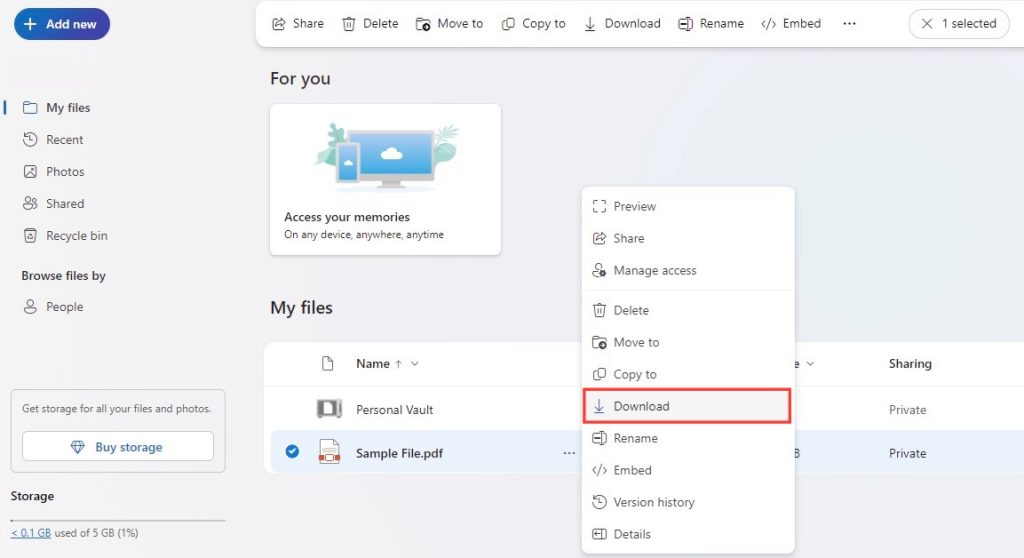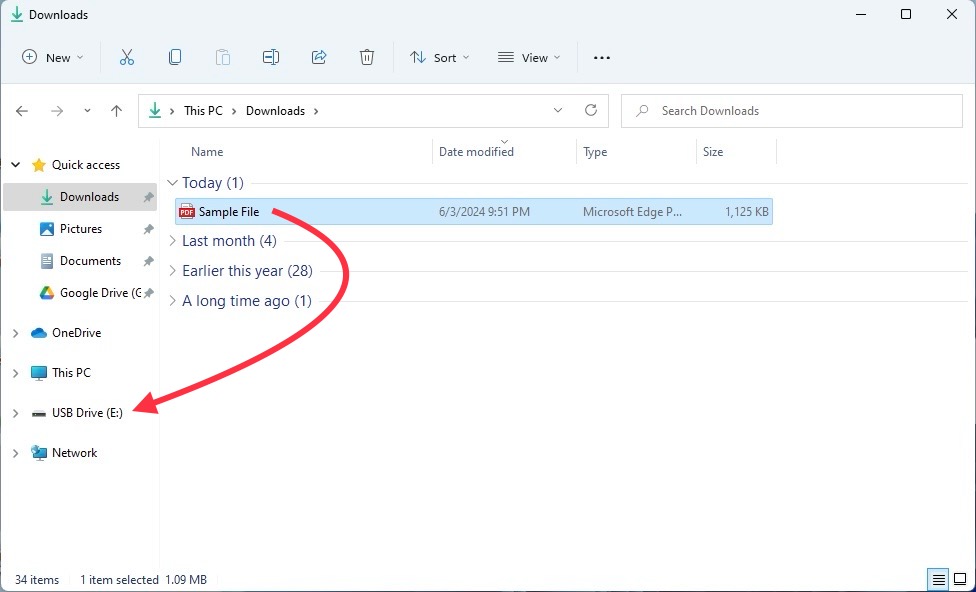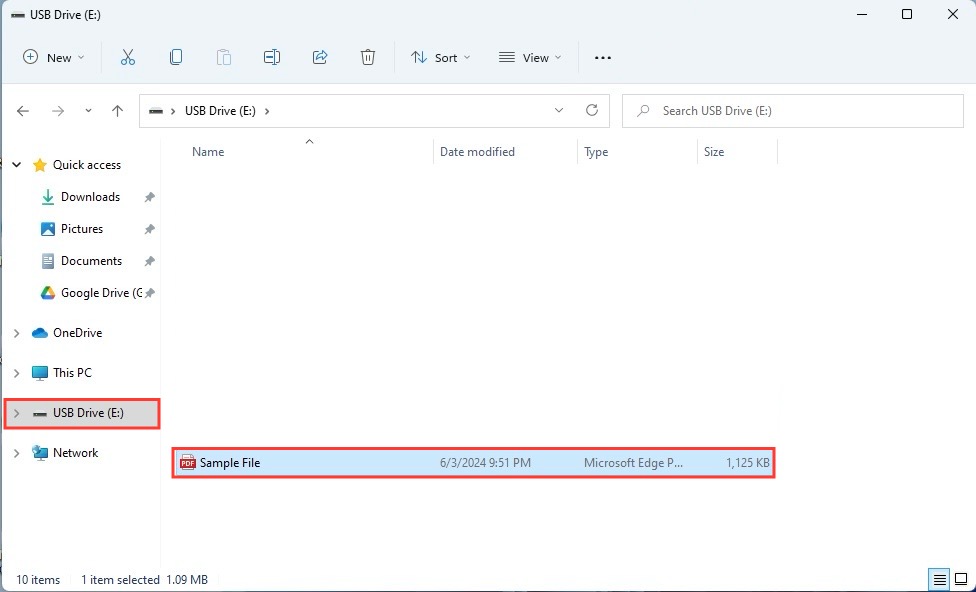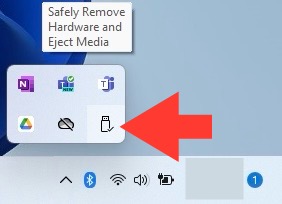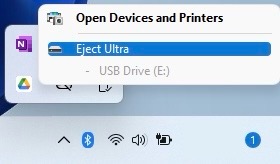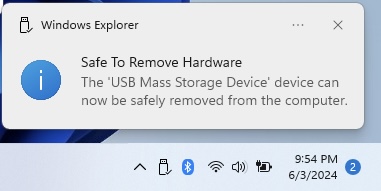Key Takeaways
- Utilize the OneDrive web interface to select and download desired files or folders directly to your computer, then manually transfer these downloads to backup OneDrive files.
- Employ the OneDrive Sync Client, which allows you to synchronize your files locally on your computer, from where you can easily move them to an external hard drive for an additional layer of data protection.
- Consider using dedicated file backup software, such as Qiling Backup, to streamline the process of backing up local copies of your OneDrive files directly to an external hard drive, ensuring a secure and efficient backup routine.
Exploring Backup Methods for OneDrive Data
There are several methods to consider when backing up OneDrive:
Direct Download: You can manually download your files from OneDrive to your computer.
Sync Client: Utilize the OneDrive sync client to automatically save files to your PC, which you can then move to an external hard drive.
Third-Party Software: Specialized backup tools offer a robust solution, seamlessly automating the backup process with additional features like scheduling and incremental backups.
Cloud to Cloud Backup: Some services like Qiling Backup offer direct transfer of your OneDrive data to another cloud storage as an additional layer of backup.
Each of these methods has its own merits, but for utmost security and convenience, using third-party software specifically designed for seamless backups is a prudent investment.
Preventing Data Loss: The Importance of External Backups
Securing your OneDrive files with external backups is like having a safety net beneath a tightrope; it’s your indispensable fallback in case of a slip. External backups not only prevent permanent data loss in the event of a cyber incident or accidental deletion but also serve to preserve data integrity free from possible corruption in the cloud. This approach empowers you to restore information swiftly, ensuring business continuity and peace of mind. Remember that redundancy is a cardinal rule in digital security – having multiple copies of data, particularly in different locations (like an external hard drive), curbs the impact of data loss incidents.
Manual vs. Automatic Backups: Evaluating Your Options
When deciding between manual or automatic backups, consider these key differences:
Manual backups give you full control over when and what to save but require regular human intervention. They’re easier to customize but more prone to human error or oversight.
Automatic backups, conversely, use software to regularly and systematically back up data without needing your constant attention. They reduce the risk of forgetting to back up and are great for setting and maintaining a consistent backup schedule.
Consider the trade-offs in convenience, reliability, and control to determine which approach will best serve your file security strategy.
Differentiating Between Cloud and Local Backups for OneDrive
When it comes to safeguarding your OneDrive files, understanding the difference between cloud and local backups is key to a comprehensive strategy.
Cloud backups offer anywhere access and are superbly scalable. They’re generally cost-effective, offer more storage for less money, and protect against local disasters. But, they can be slower for data recovery and may have flexibility limitations.
Local backups, like those on an external hard be more secure in terms of vulnerability to cyber threats and are quicker to access for data recovery. However, they are at risk for physical damage and their scalability can come at a higher cost.
Leveraging both can help ensure that you’re not placing all your eggs in one basket. It’s a smart move to integrate both cloud and local backups in your OneDrive backup plan.
Step-by-Step Guide to Backing Up OneDrive Files
Backing up your OneDrive files to an external hard drive can be achieved with just a few straightforward steps:
STEP 1: Access OneDrive: Visit the OneDrive website and sign in with your credentials.
STEP 2: Select Files/Folders: Navigate your files and choose the ones you wish to back up.
STEP 3: Download: Right-click the selected files/folders and click ‘Download’ to save them onto your computer.
STEP 4: Connect External Drive: Plug your external hard drive into your computer.
STEP 5: Transfer: Drag and drop the downloaded files from your computer onto your external hard drive.
For added assurance, verify that the files have been successfully copied to the external drive.
Remember to safely eject your external hard drive once the transfer is complete to avoid any potential data corruption.
Automating Your OneDrive Backup with Software Solutions
Automating your OneDrive backup is a set-and-forget solution that can save you time and offer peace of mind. Here’s how to automate the process using software solutions:
- Choose Backup Software: Pick a reliable backup software like Acronis Cyber Protect Home Office known for its ease of setting up scheduled backups.
- Set Up the Software: Install the software and link it with your OneDrive account.
- Select Backup Source: Choose OneDrive as the source of the files you wish to back up.
- Designate Destination: Assign your external hard drive as the backup destination.
- Schedule Backups: Configure the backup frequency – whether daily, weekly, or based on specific triggers like when you log off.
- Begin Backup: Start the initial backup. The software will handle subsequent backups automatically according to schedule.
This method ensures regular, up-to-date external copies of your data without needing your direct intervention after the initial setup.
Tips and Tricks for Efficient OneDrive Backups
To smoothly sail through the OneDrive backup process, here are nifty tips and tricks:
- Selective Backup: Only back up files that are crucial. Avoid clutter with unnecessary copies.
- Use Backup Software: Leverage software for scheduling and to ensure consistency in your backups.
- Incremental Backups: After the first full backup, use incremental backups to save time and space.
- Retention Policies: Set these up to automatically clear out redundant or outdated files.
- Encryption: Protect your backup with encryption, particularly for sensitive data.
By applying these strategies, you’ll efficiently utilize your backup space and keep the process manageable.
Best Practices to Ensure a Seamless OneDrive Backup Experience
Following best practices can make your OneDrive backup process smooth and reliable:
- Prioritize Regular Backups: Schedule automatic backups or set reminders for manual backups.
- Verify Backups: Check that files are correctly copied and can be restored.
- Organize Files: Keep your OneDrive and backup locations tidy for easier management.
- Update Software: Ensure that any backup software is up to date to avoid compatibility issues.
- Test Recovery: Periodically test file restoration to be sure you can rely on your backups in a pinch.
Instituting these practices helps to secure your data against unexpected disasters and tech hiccups.
Troubleshooting Common OneDrive Backup Issues
In your quest to secure files with OneDrive backups, you may encounter a hiccup or two. Here’s how to troubleshoot common issues:
- “Important folders on a domain can’t be protected” Error: If you’re getting this while using a personal account, switch to a work or school account or contact your IT administrator.
- Path Length Limit Exceeded: Ensure the file path, including the name, is under 260 characters. Simplify folder names or reorganize to avoid deep nesting.
- File Size Exceeds Limit: OneDrive can’t sync files over 250GB. You’ll need to exclude these from your automatic backups.
- Invalid File Names: Rename any files that start with a space or contain forbidden characters.
- Syncing Errors: If a folder isn’t syncing, open OneDrive settings, go to ‘Choose Folders’ and ensure all desired folders are selected.
Keep this troubleshooting guide handy to swiftly navigate through errors and keep your backup process on track.
Table of Contents
FAQs
Can I sync OneDrive to an external hard drive?
Absolutely! You can sync OneDrive to an external hard drive with relative ease. Simply connect the drive to your PC, change OneDrive’s sync folder location to the external hard drive, and let the client treat it as part of your local storage. This way, you ensure your data is mirrored onto a physical drive that’s under your control.
What are the benefits of backing up OneDrive files to an external drive?
Backing up OneDrive files to an external drive provides a safety net against data loss and cloud service disruptions. It’s a simple way to add an extra layer of data protection for your most important files, offering:
- Convenience of offline access
- Security against ransomware and cloud-based threats
- Complete control over backup frequency and file selection
- Quick recovery without internet dependency
- Cost savings on cloud storage if dealing with large amounts of data
This approach is especially beneficial for those who handle sensitive information or work in areas with unreliable internet connections.
How do I ensure my OneDrive backup to an external hard drive is secure?
To ensure your OneDrive backup on an external hard drive is secure, consider these steps:
- Use strong encryption tools to protect sensitive files before transferring them to the drive.
- Regularly update your backup software to fend off vulnerabilities.
- Secure physical access to the drive, keeping it in a locked and environmentally stable location.
- Follow a strict backup protocol, like regular backups and safely removing the drive after backup.
By taking these measures, you can create a robust defense against both digital and physical threats to your data.
When your onedrive folder gets full and can’t save any more files?
When your OneDrive folder reaches capacity, consider the following steps:
- Organize your files: Delete duplicates or unnecessary items to free up space.
- Archive old files: Move less frequently accessed files to your external hard drive backup.
- Expand storage: Consider subscribing to additional OneDrive storage if necessary.
Taking these actions can help you manage your data and ensure that your OneDrive continues to sync without interruption.
John Michaloudis is a former accountant and finance analyst at General Electric, a Microsoft MVP since 2020, an Amazon #1 bestselling author of 4 Microsoft Excel books and teacher of Microsoft Excel & Office over at his flagship MyExcelOnline Academy Online Course.

